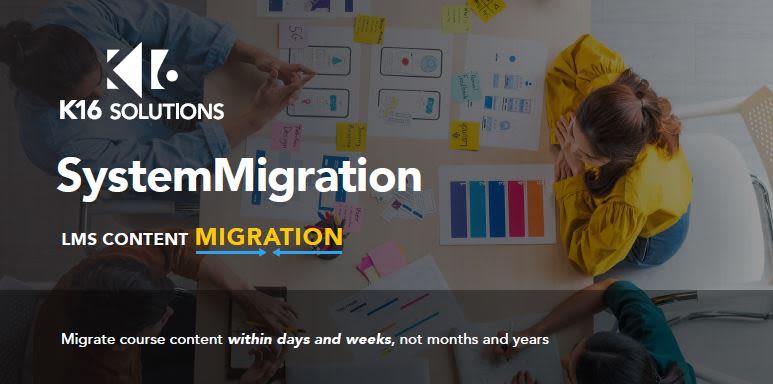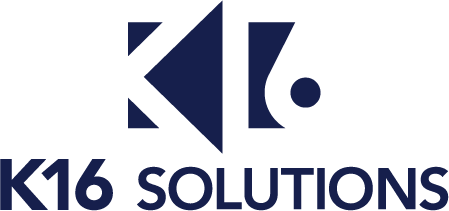Automated LMS migration and data archiving become the new standard
a University of Memphis & K16 Solutions story

When the University of Memphis decided to switch its Learning Management System to Instructure’s Canvas, it was in a time crunch. Not wanting to extend its contract with its legacy system any longer, the internal migration team had just six months to transfer 27,000 courses while also archiving three years of data.
Learning management systems (LMS) are hard to quit by design. Universities often sign onto long-term contracts, and then find it difficult to move their existing courses to newer, more dynamic platforms and, if they do, can be similarly stuck paying for a legacy system to archive their old data. One big holdup: the migration itself. Costly and time-intensive if done by the university itself, the prospect of migrating an entire catalog class by class can seem daunting. But as competition between LMS providers heats up, institutions are finding they can jump from one platform to the other with relative ease with the help of automated migration services.
"Responsive customer support is going to stand out for any vendor I work with. K16 Solutions has become the gold standard."- Dr. Scott Vann, Director of Academic Learning Support
The myth of manual migration
For the University of Memphis, it became clear early on that migrating its courses manually wasn’t possible. While the university employs instructional designers, they mainly focus on helping faculty create and improve course content. Upon trying to export data using their legacy provider’s bulk export tool, the staff knew there was no way it could tackle such a large move on its own.
Manual migration may seem attractive to institutions interested in cost savings, but that assumption is flawed, explains Jason W. Simmons, Vice President at K16 Solutions, at an Arizona-based organization that automates the LMS migration and archiving process
For starters, it often forces universities to maintain contracts with two providers at the same time, a costly endeavor that also creates an inconsistent user experience for faculty and students. Manual migration also requires faculty and staff to spend countless hours copying and pasting course content into their new platform or cleaning up the results of a bulk migration–time that could have been spent learning the new LMS and even upgrading course content. Finally, many universities find they have to either pay existing staff overtime or outsource temporary IT support to finish the migration, wiping away any sort of cost savings from choosing the DIY route.
Once the University of Memphis realized it was unable to manage such a large migration on its own, Dr. Scott W. Vann, the institution’s Director of Academic Learning Support, turned to K16 Solutions for help. For the online courses, the transition was relatively simple, as The University of Memphis’ online classes follow a master course template. However, the process is not as strict with hybrid and face-to-face classes. So Dr. Vann and his team utilized a pilot phase allowing them to test out the other courses before committing to the bulk migration.
“We provided them several dozen courses from each college,” he explains. This allowed faculty and instructional designers to log in and check each course and provide feedback to K16 Solutions. “Every once in a while, a header would be out of place, and they’d adjust the API on their end,” he said. After a few rounds of internal testing, K16 Solutions migrated the thousands courses with ease.
Automated migration is the new standard
As more and more universities decide to shift from one LMS provider to the other, K16 Solutions has seen an increase in demand for its services. Once the company began working with providers like Instructure and Blackboard directly, its customer base has grown exponentially. In 2020, the first year it offered migration services, K16 Solutions migrated fewer than 20 institutions. By 2021, its year over year growth was 320%, and it’s poised to continue on a similar trajectory in 2022.
One reason for the growth: universities find that choosing automated migration provides their leadership with more time to focus on the change management aspects of moving from one LMS to the other. The University of Memphis’ academic support staff, for example, worked with faculty on learning the new system and improving their courses. “Having that time did a lot psychologically to make them feel more comfortable about the transition,” Dr. Barrett Schwarz, Instructional Designer at the university.
And when the team officially made the switch earlier this year without hiccups, the investment in automated migration paid dividends. “In January when faculty logged in to get started, the courses we migrated looked just like they had in D2L,” Vann says. “We received a lot of great feedback about the course content coming over with no issues.
"Having such an openness and the efficiency with which our feedback was integrated was really impressive"- Dr. Barrett Schwarz, Instructional Designer

SystemMigration Quickly and effectively migrate your course content from one LMS platform to another - K16 integrates with all major providers. Get the SystemMigration Datasheet.
SystemMigration Quickly and effectively migrate your course content from one LMS platform to another - K16 integrates with all major providers. Get the SystemMigration Datasheet.

MIGRATION & ARCHIVING CASE STUDY (CANVAS) Saint Mary's University of Minnesota migrates to Canvas using K16's SystemMigration automated service and archives with DataArchiving. Get the case study.
MIGRATION & ARCHIVING CASE STUDY (CANVAS) Saint Mary's University of Minnesota migrates to Canvas using K16's SystemMigration automated service and archives with DataArchiving. Get the case study.
What is DataArchiving?
This video explains the basics of the K16 Solutions DataArchiving service in under 90 seconds.

Adding archiving to migration for a more robust strategy
One critically important aspect of course migration is the archiving of student data. Most states typically require universities to store at least 2-3 years of student records, but some can require up to 11 years worth of data. “Having easy access to records to support coursework and grades not only supports data integrity but also the academic integrity of an institution,” Simmons says.
Many universities choose to archive their data on their own when moving to new LMS platforms, forcing them to choose between two less than optimal choices . They can either maintain a contract with their old vendor, paying anywhere from $10,000 to $25,000 a month just to maintain read-only access to these files. Or, they opt for a so-called cold storage method, which keeps the data in zip files that remain unintegrated with the new LMS and lacking a user interface, making them nearly impossible to read.
K16 Solutions has noticed a growth in its archiving services as well. “On average, about 85% of the clients who we migrate also archive their historical course and student data with us as well,” Simmons says.
The University of Memphis archived 60,000 courses as part of its 3-year-retention policy. “Students have up to 12 months to refute a grade,” Vann says, noting that being able to access data from a portal at any time was a “driving force” behind the decision to archive with K16 Solutions during the migration process.
“Combining these two solutions at the same time, universities can be assured their courses migrate and operate well in their new LMS, while their archived data remains intact, easily accessible and readable whenever they need it,” Simmons says.
This custom content is sponsored and by K16 Solutions and developed by Inside Higher Ed's sponsored content team. The editorial staff of Inside Higher Ed had no role in its creation.


